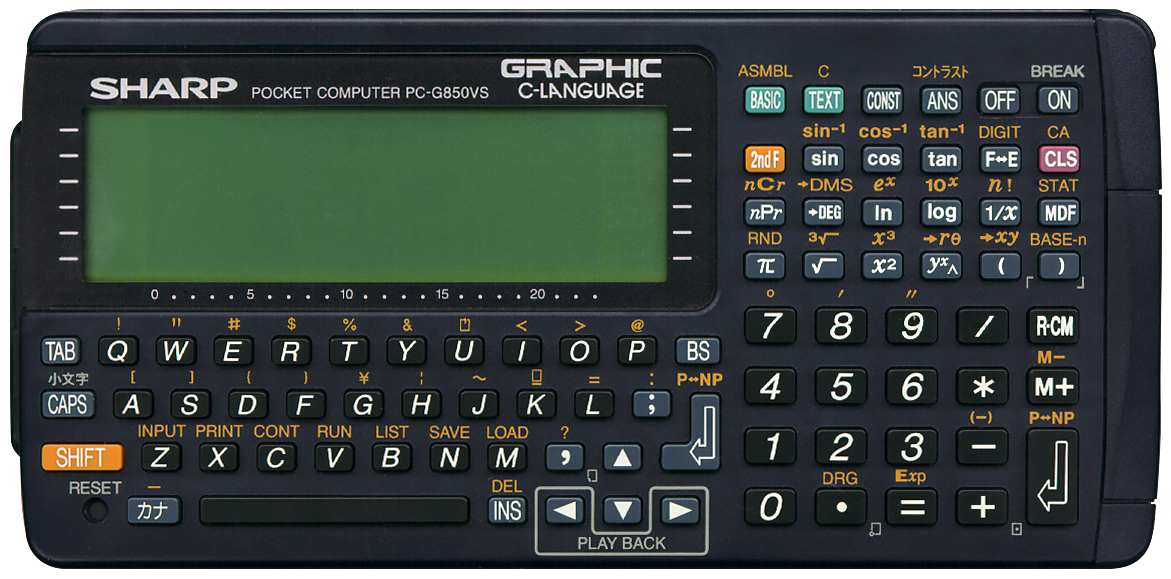
Terminated: unknown
It is a Japan-only model by SHARP and it is targeted for education. Its manual is in Japanese but using an intermediate German translation an English manual was created by Jack W. Hsu. The original page on hopto.org is no longer available. You can find a cached version on archive.org here (link validated 2025-12-06). Without this very nice translation it is slightly difficult to use this machine.
Quite a capable Pocket Computer. It’s primary programming language is BASIC. Additional languages are C, CASL (using compilation) and ASSELBL (assembly, machine language for its Z80 processor). CASL is a language specific to the COMET virtual machine, a virtual machine and assembler system that was created by the Japanese Ministry of Education to facilitate students in learning how to really program. It can also be used in PIC mode, which is used for specific externally connected programmable PIC microcontrollers using machine language.
When used in "RUN MODE" it is a capable scientific calculator. In this mode the right part of the Pocket Computer can be used to perform calculations just as if it were a regular calculator. Next to that it is still possible to type in calculations manually. For instance, pressing the sin key to calculate the sinus of the value currently displayed, will display the same result as actually typing S I N followed by pressing ANS. It works quite intuitively. And fast. The advantage of using the second method is that input can be edited using the ◄ ► arrow keys.
C-programs and CASL-programs are entered using a built-in text editor. Even though the languages do not use line numbers, all lines must be numbered to specify their chronological order. They can be compiled and run using the Pocket Computer’s built-in compilers.
The keyboard can be used to enter roman alphabetic characters as well as katakana syllables using the カナ key. Talking about the keyboard, the SHIFT key operates as a regular PC-keyboard’s SHIFT key: it needs to be pressed and held down when one wants to invoke a key’s second function.
A special built-in BASIC program can be used for BASE-n calculations. This program can be stared using the BASE-n function (above the ) key). Beware though. Firsty all of this program’s user interface is in Japanese including this one, secondly, invoking this will clear your current entered BASIC program and replace it with said "BASE-n"-program. Very peculiar for such a sophisticated machine. When the BASE-n function is invoked, the user is warned by the ominous "BASIC DELETE OK? (Y)" message. Press Y to replace your own BASIC program with the built-in "BASE-n" program. And as mentioned already, the BASE-n program is in Japanese.
Contrary to some of its predecessors, in BASIC, single character variables can be either a string or a number. For instance, A and A$ can not coexist. A is either a number, or a string using A$. I personally find this peculiar for a machine with so much memory. Every single character variable can store a number or a 7-character string. It is also possible to use multi-character variable names. Only the first two characters are significant, thus CA is the same variable as CALCULATOR. Using two-character variables it is however possible to use both AA and AA$ as separate variables. Used as alphanumeric variables they can store 16 characters.